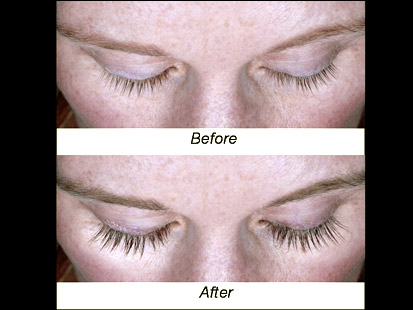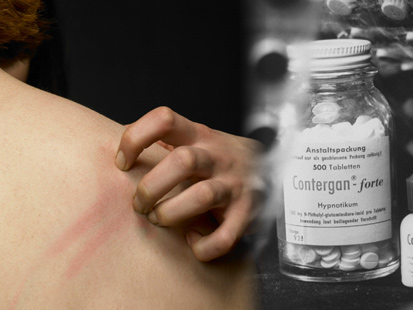Prozac for Stroke Recovery? 11 Multi-Use Drugs
Many commonly prescribed drugs have surprising other uses.
Jan 10, 2011 -- Prozac is one of the most widely prescribed antidepressants, but according to a new study, it also shows great promise in the recovery of people left moderately to severely disabled from strokes.
While it's not FDA-approved as a drug that can help stroke patients enhance their motor skills, Prozac is certainly not alone in being a double-duty drug.
There are other drugs that perform dual roles, including a skin cancer cream used to smooth out your facial wrinkles, a baldness drug to protect against prostate cancer, and a drug for enlarged prostate and possibly prostate cancer that may stop baldness.
Once a drug has been approved for one use, doctors can prescribe it "off-label" when it is shown to be useful for something else. And an increasing number of drugs are prescribed in this manner. Off-label use of medicines accounts for about one fifth of all prescriptions, according to a 2008 study in the New England Journal of Medicine.
Many of these off-label uses meet with controversy and questions about their value, particularly since the FDA has not yet approved them. (As a result, drug companies cannot advertise off-label uses.)
Though the hair loss drug finasteride is recommended by some medical organizations as a preventative measure against prostate cancer, many doctors say that such a use is inefficient and ill-advised.
But in many other cases, the alternative uses are well-known in the medical community -- though perhaps not among the general public -- and are regularly exploited.
Get Your Questions Answered at the OnCall+ Mind and Mood Center
Prozac
Prozac, also known as fluoxetine, is approved by the FDA for the treatment of major depression, obsessive-compulsive disorder, panic disorder and a number of other conditions.
But a group of French researchers found the drug may have another use. Their study, published in The Lancet, found that giving fluoxetine after a stroke could help sufferers improve their motor skills.
The authors gave 118 patients treated at 9 different medical centers either fluoxetine or a placebo for three months starting 10 days after their strokes. Those patients who received fluoxetine showed a 40 percent greater improvement in motor function than the placebo group. The same patients who took fluoxetine were also significantly less depressed than their placebo counterparts.

According to the authors, the results suggest that fluoxetine and other selective serotonin reuptake inhibitors (SSRIs) offer "a new pathway that should be explored further in the treatment of acute ischemic stroke."
Neurologists not involved in the research say while the study is small and the patients may not be representative of all those who suffer strokes, the findings warrant further study.
"The effects are so striking that I think it's really important to recognize this as a potential treatment for improving recovery in patients with significant motor deficits," said Lee Schwamm, vice chair of the Department of Neurology at Massachusetts General Hospital in Boston.
Previous smaller studies have suggested that SSRIs can play a role in recovery from a stroke, so the current study's findings are not entirely new.
Experts say they do not know exactly how Prozac helps in stroke recovery.
"It is possible that the antidepressant effect, rather than an effect on the recovery process itself, might explain the difference [between the two study groups]," said Dr. Larry Goldstein, director of the Duke Stroke Center at the Duke University School of Medicine in Durham, N.C.
Neurologists also say that before recommending that Prozac be part of stroke treatment guidelines, the study should be replicated using more subjects to determine how long patients should take Prozac, whether it's an effect caused by the drug itself or the whole class of medications, the risk of seizures, and the precise mechanism of action.
"Treatments to improve recovery after a stroke are much needed, so anything that promises improvement needs to be considered," said Dr. Joseph Broderick, professor and chair of the Department of Neurology at the University of Cincinnati Neuroscience Institute in Cincinnati.
Viagra
Viagra is approved for use as a treatment for erectile dysfunction, and is also marketed under the name Revatio to treat pulmonary hypertension, a buildup of pressure in blood vessels leading to the lungs.
Doctors have also used it off-label to increase the blood flow to damaged areas as a way to avoid amputation and the onset of gangrene.
And new promising research may also lead to another use of Viagra: as a treatment for prostate cancer in combination with another cancer drug, doxorubicin.

Researchers from Virginia Commonwealth University discovered that in mice, the combination of Viagra and doxorubicin effectively killed prostate cancer cells and also offered a protection against the well-known cardiac effects of doxorubicin, including cardiomyopathy and heart failure. The study is published in the latest issue of the journal Proceedings of the National Academy of Sciences.
"Doxorubicin has been used for more than 40 years and continues to be one of the most effective drugs against cancer, but the problem is the cardiac effects of this drug," said Rakesh Kukreja, professor of internal medicine at Virginia Commonwealth University in Richmond, Va., and one of the study's authors.
Kukreja said the drug combination was also effective against ovarian cancer and stomach cancer, and the findings show it has great potential as a cancer treatment.
Other experts are not convinced of that treatment potential.
"Everything works against mouse tumors," said Dr. Derek Raghavan, chair and director of the Cleveland Clinic Taussig Cancer Institute. He is not connected with the Viagra study.
"These types of data are what have been seen in the field for years and are doubtful to give a long and/or significant impact to tumor growth," said Robert Gertzenberg, professor of urology at the Johns Hopkins University School of Medicine. He is also not connected with the current research.
Avodart
Approved for the treatment of enlarged prostate, Avodart, like Propecia, has been tested for prevention of prostate cancer as well.
But the drug from GlaxoSmithKline, chemically known as dutasteride, finds a third use: preventing baldness. Smaller studies have shown some encouraging results.
"It seems to have more benefit [than finasteride] in regrowing hair from pattern hair loss," said Dr. Amy Newburger of Dermatology Consultants of Westchester, N.Y., noting that "it is not yet approved for this indication."
That Avodart would work makes some sense. Like Propecia, the drug targets the pathway that converts testosterone to DHT, which is the suspected culprit in hair loss.
"There are good studies that show it is effective," said Dr. Marc Avram, clinical associate professor of dermatology at Weill Medical College at Cornell Medical Center. "There are doctors who do give it out there for hair loss.
"Doctors are using it off-label for men," Avram said. "It absolutely should not be used off-label for women."
While women should not use the drug because of the risk of birth defects, questions also remain about its safety as a baldness remedy for men.
In a review article last October in the Journal of the American Academy of Dermatology, Avram and Dr. Nicole Rogers, a hair loss specialist with Old Metairie Dermatology in Metairie, La., wrote that "phase III FDA trials appear to be on hold for using dutasteride to treat male pattern hair loss. It is unclear exactly why, but we hypothesize it is because of concerns about side effects."
Dutasteride lasts much longer in the body than finasteride, and among the side effects the doctors noted was a reduced sperm count among men using the drug.
"The sexual side effect, if you get it, lasts a lot longer than with Propecia," Avram said. "If it affects sperm, they're going to need to do long-terms studies to approve it.
"My feeling is they [GSK] are not really going strong for approval, because to do that, they're going to have to prove that sperm is not affected in any long-term ways," he said.
Avram said he does not typically prescribe the drug.
"My feeling is Propecia works in most men, and between Propecia and Rogaine, we can stop their hair loss," he said.
Efudex
Efudex, a skin cream that has been used for years to combat the early stages of skin cancer, may one day have a second use as a wrinkle-buster.
So suggests a small study of 21 subjects, commissioned by Valeant Pharmaceuticals, which makes the cream. The study is published in the June issue of the journal Archives of Dermatology.

Study participants who applied the cream twice daily for two weeks were able to reduce the number of potentially pre-cancerous spots on their faces. But in addition to this, researchers also found through clinical evaluation that the subjects enjoyed other improvements in aging-related damage, including fewer wrinkles, fewer dark skin spots and less hyperpigmentation.
The drug, of course, also had side effects -- primarily in the form of redness and irritation shortly after the application of the cream. And even though a number of currently available cosmetic skin treatments have similar or worse side effects, for some consumers these downsides could outweigh the benefits.
"It is possible that for some patients, topical fluorouracil may have an important role against photo-aging," lead study author Dr. Daniel Sachs of the University of Michigan Medical School in Ann Arbor said in a press release. "For others, however, it may not be cosmetically acceptable given that a standard course of therapy may last two to three weeks and the ensuing reaction can persist for several more weeks."
Still, the idea that the drug could one day enter the cosmetic armamentarium is not an outlandish one.
"Undoubtedly, there will be patients who desire a therapy such as topical fluorouracil for cosmetic purposes given the relatively low cost of this therapy compared with ... laser resurfacing," Sachs said.
Finasteride
On Tuesday, two medical organizations -- the American Society of Clinical Oncology (ASCO) and the American Urological Association (AUA) -- announced new guidelines that recommend that millions of men over age 55 who are regularly screened for prostate cancer speak with their doctor about taking a drug which might reduce their risk of the disease.
This drug is finasteride -- a drug that has been shown in studies to help ward off prostate cancer, but which is perhaps more well-known as the hair-loss drug Propecia.

Indeed, in a 2003 study involving 18,000 men, finasteride was shown to cut the risk of prostate cancer by around 8 percent.
"If a man is getting screened because he's worried about prostate cancer, taking the drug is a very rational thing to do along with screening," Dr. Otis Brawley, chief medical officer of the American Cancer Society, told ABC News.
But at the estimated cost of $90 a month, the drug is expensive. And in the earlier trials there was some evidence that the drug might cause high-grade cancers. While proponents have denied such findings, other doctors have voiced their concern over this potential use of the drug.
"There are way too many side effects, and I believe that if they get cancer on finasteride, it's going to be biologically more aggressive," said Dr. Aaron Katz, director of the Center for Holistic Urology at Columbia University. "This is not the way to prevent cancer of the prostate."
"I still do not feel that this is ready for prime time," agreed Robert Getzenberg, director of urology research at the Brady Urology Institute at Johns Hopkins Hospital. "There are too many important questions that are unanswered."
Viagra
In a pinch, doctors may look to the erectile dysfunction drug Viagra as a means to increase blood flow to tissues in the body that need it. Such was the case when 20-year-old college sophomore Jamie Schanbaum suffered meningitis and, shortly thereafter, an infection that threatened her fingers and legs.

Dr. Peter Lin, Schanbaum's doctor, who treated her at St. Joseph's hospital outside of Houston, said his team used the drug to see if it would be possible to spare Schanbaum the extensive amputations some physicians suggested as the only way to control the gangrene in her arms and legs.
"Viagra stimulates blood flow," Lin told ABCNews.com. "We wanted as much blood flow to get to the damaged area as possible."
While Viagra's usefulness in this regard has yet to be confirmed, an Australian study this year looked at the possibility that the drug might help increase blood flow to the uterus in pregnant women, which could in turn help developing fetuses receive more oxygen. Other studies have also taken a look at whether the drug could one day be used to increase blood flow to the brains of patients with multiple sclerosis, as well as whether it could help travelers deal with jet lag.
Botox
It's a drug whose name has become synonymous with cosmetic treatment. But many forget that Botox -- the most commonly known brand name for botulinum toxin type A -- had its humble start in the treatment of crossed eyes and spastic conditions as early as the 1970s.

However, the reputation of the drug changed forever in 2002 when the U.S. Food and Drug Administration approved it for the treatment of facial frown lines. Injecting the solution into the faces of their patients, doctors could selectively paralyze certain muscles implicated in the formation of wrinkles.
Now, doctors are further stretching the drug's usefulness by treating patients who experience certain type of hyperlacrimation -- in other words, the overproduction of tears in response to certain stimuli.
For 58-year-old Patricia Webster of Maidstone, England, who had been living with the degenerative nerve condition known as Guillain-Barre syndrome, the occasional shot straight into her tear ducts means freedom from an embarrassing symptom of her condition in which she would appear to cry whenever she ate.
"For the last 18 years of my life I've done nothing, and the embarrassment of my eyes was a major part of this," she told ABCNews.com.
Still, even Webster was skeptical when her doctor first offered up the treatment.
"Of course, I'm thinking, 'Botox ... it's a cosmetic treatment.' I thought, 'He's not worried about my eye, he's telling me that I'm wrinkly,'" Webster said.
In addition to hyperlacrimation, some doctors are also using Botox to help relieve chronic pain.
Latisse
Many glaucoma patients using an eye drop known as bimatoprost to improve their vision have enjoyed an unexpected side effect -- thicker, more luxurious eyelashes.
The effects of the medication were so pronounced, in fact, that the FDA recently approved the drug for this cosmetic use. Allergan, the company that manufactures the glaucoma drug known as Lumigan, rebranded it under the new name Latisse.

Dr. Scott Whitcup, Allergan's executive vice president of research and development, told ABCNews.com that researchers noted the eyelash-enhancing side effects of the eye drops during the Phase 3 trials for the drug.
"At the time, we began thinking of developing Lumigan as a treatment for eyelash growth," Whitcup said.
Essentially, the drug works by keeping hairs in their growth phase -- the phase during which they become longer, thicker and darker. Of course, the eyelash-enhancing effects of Latisse are not permanent once the drug is discontinued. And at $120 for a 30-day supply, Latisse is not cheap. But it is still far cheaper (and most likely less risky) than surgical procedures designed to achieve the same end.
Robitussin
Strange but true: When it comes to trying to get pregnant, some women look to a remedy more associated with coughs and colds than conception. That remedy is Robitussin.

So far there is no reliable evidence to show that the syrup does much, if anything, to increase the odds of a woman getting pregnant. The theory, however, is that in much the same way the drug can thin the mucus in your nose and throat, it may also thin the cervical mucus. Thinner cervical mucus means that sperm may have an easier time making it into the uterus to fertilize a waiting egg.
While proof of this remedy remains elusive, it is far from the only home-grown cure that many women look to when it comes to getting pregnant. Some aspiring moms try dietary changes, for example. But because so many factors contribute to a woman's ability to conceive, doctors warn that changing any one variable is not likely to have a huge overall effect on the chances of pregnancy.
Phosphatidylcholine
Among the plethora of drugs used in the cosmetic realm, it's a safe bet that few would recognize the name phosphatidylcholine. But in many clinics around the world, this soybean-based, FDA-approved treatment to break down fat in the blood is also being injected under the more familiar names lipostabil or lipodissolve as a surgery-free fat buster.
That's not to say, however, that the treatment is safe. Indeed, cosmetic surgeons and dermatologists agree that these injections should be avoided by consumers shopping around for a slimmer look.

"There is really not a single scientific study to show that it definitely works," Dr. Malcolm Roth, director of plastic surgery at Maimondes Medical Center in Brooklyn, N.Y., told ABCNews.com. "Are these chemicals safe when injected into fat? And what happens to this fat? Where does it go?"
Despite the dangers of the procedure, however, the growing number of clinics offering the treatment is a testament to its continued legal status in the United States. Still, the procedure is banned for cosmetic purposes in Brazil and other countries.
"Most physicians performing this procedure do not have training in liposuction, plastic surgery or dermatologic surgery," said Dr. Carolyn Jacob, a board-certified dermatologist in Chicago. "Even dentists are doing it."
Ecstasy
More often associated with its use as a club drug, ecstasy has captured the attention of researchers who hope that the illicit pill may one day be used to help treat post-traumatic stress disorder, or PTSD.
In the late 1970s, a group of psychiatrists found that the drug had an effect on levels of serotonin, a brain chemical that is known to regulate mood. Indeed, before ecstasy was made illegal in 1985, some psychotherapists were giving the drug to patients, citing its usefulness as an effective therapeutic tool.

In 2004, despite the illegality of the drug, the U.S. government authorized a human study of its potential to help those suffering from the emotional scars of a traumatic event.
However, while some patients in the study felt that they had benefited from the drug, today it remains on the government's list of Schedule I drugs -- a classification that includes heroin, cocaine and methamphetamines. Still, some hope that the restrictions on the drug's use may one day be lifted to help soldiers returning from war deal with psychological trauma.
Thalidomide
Few drugs have as controversial a reputation as thalidomide. First marketed in 1957 to stave off morning sickness in pregnant women, the drug was soon found to be linked with severe birth defects ranging from cleft palates to missing and abnormal limbs, spinal cord deformities and organ abnormalities.

Despite these tragic and high-profile outcomes, a small group of patients did benefit from using the drug -- those with a severe and debilitating leprosy-associated complication known as erythema nodosum leprosum (ENL).
Considering the small number of people today who live with leprosy, it may come as little surprise that the silver lining of this devastating drug remains relatively secret. And the World Health Organization still recommends against the use of the drug to treat the ravages of ENL due to birth defects.
Nonetheless, in 1998 the FDA cleared the drug's use for leprosy under strict supervision. Women who are candidates for receiving the drug are required to undergo pregnancy testing both before and during their treatment with the drug. Men using the drug are required to use a condom whenever they have sex with a woman, and all patients are limited to a 28-day supply and must see a doctor before getting more of the drug.
Reports from Emily Friedman, Radha Chitale and Bob Woodruff contributed to this report.
-------
Do you want to know more about men's health issues such as proper nutrition, strength training and sports injuries? Visit the ABCNews.com OnCall+ Men's Health Center to get all your questions answered.